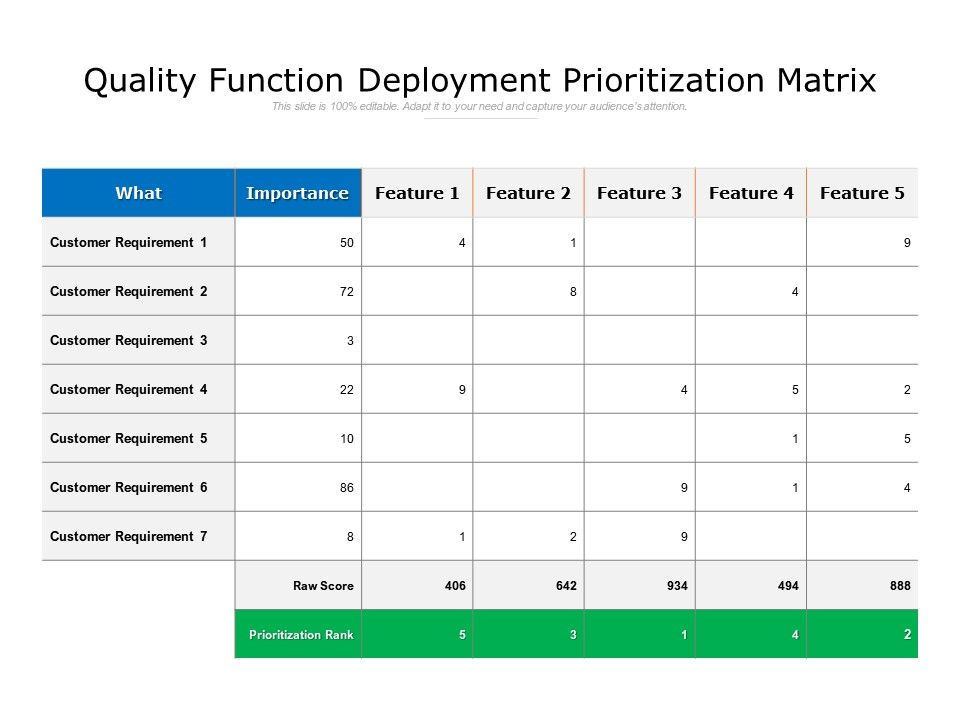

- #COMMUNICATION PRIORITY MATRIX SOFTWARE#
- #COMMUNICATION PRIORITY MATRIX PROFESSIONAL#
The prioritization matrix puts its focus on the important things and works accordingly. It can work objectively and prioritize without any emotional baggage. When you have multiple factors at your disposal that can have hearsay on the decision making the prioritization matrix breaks down the complex issues. The best thing about using a prioritization matrix is that you can use it 24*7 on any given day. It is most useful in circumstances where problem-solving resources, for instance, money, time, or people are limited or when problems and solutions are interlinked. It is considered a reliable process that puts back the onus on what is important in an orderly manner. 
Large organizations, as well as an individual, can use this matrix for complex as well as simple projects quite effectively.
#COMMUNICATION PRIORITY MATRIX SOFTWARE#
The prioritization matrix is often used with Six Sigma system or bpm software by comparing the given choices and figuring it out the best option for prioritizing.
#6 Project summary emails and reporting. #4 Cloud-based synchronization across platforms. All the quadrants have to organize the tasks depending upon the level of urgency and importance. 11 Benefits of the prioritization matrix. #4 Value and Complexity prioritization matrix. #3 Value and Risk prioritization matrix. #2 Value and Effort prioritization matrix. #5 Evaluate criteria against every other criterion. #4 Evaluate your options against weighted criteria. #3 Compare the relative importance of the criteria. This article was made as a follow-up to the open webinar on the same topic. Frequently used time management programs are: Remember the Milk, Evernote, Wunderlist, ToodleDo, Todoist, etc.Īuthor: Olga Lostakova, a lecturer at LIGS University Technologyįor efficiency, it is advisable to use various technological innovations that make data sharing and synchronization easier or be interested in efficient use of software programs (e.g. Efficiency is also related to the ability to determine the time of the day we have the most energy and use this time for more complex tasks. It is important that the manager realize that the human body is not always ready for maximum performance. It is important to always have a recording device with us, in which we can write or audio/video record a thought that has occurred to us, and not burden our mental capacity in order to remember the thought. Making a small step, asking for help, and avoiding perfectionism are also useful tools for handling procrastination. Setting a clear deadline for the activities is helpful as well as being aware of what the leader will accomplish when completing the task (or what he/she may lose if he fails to do the task). The leader should identify the main “scarecrows” (tasks that he/she least wants to do) and start with them first. To avoid procrastination, managers need to understand what activities they tend to postpone, recognize their procrastination activities, and then use the tools to handle their procrastination. The manager should be able to effectively communicate information, manage conflicts, hold meetings, delegate, refuse unimportant tasks, etc. The use of effective communication principles is crucial for functional time management. The manager should go through the plan for the next day before leaving work so as not to be surprised by the workload the following morning. day, week, month) for the upcoming period. 
The priority matrix serves as a planning aid, which should always take place at the end of the time unit (e.g. Tasks on the unimportant level should be recognized and eliminated. Of course, the leader should devote himself or herself to tasks that are urgent and important, but at the same time devote a substantial part of his/her time to activities that are not urgent but important (so that these activities do not move into the quadrant important/urgent). The matrix divides activities into four quadrants according to urgency and importance. The everyday operational decision-making process can be carried out using the “Priority Matrix” technique which Stephen Covey described in his bestseller “7 habits of highly effective people”.
#COMMUNICATION PRIORITY MATRIX PROFESSIONAL#
The manager should set goals at both levels – professional and personal so that work-life balance can be achieved. The goals should be long-term, medium-term, and short-term and while working on them, the manager should revise the extent to which the goals are still relevant and adjust them accordingly. Clear goalsĪ clear definition of objectives (ideally in the form of SMART goals) can help to identify tools to achieve them. The key principles of time management will be briefly described below. The concept includes many different tools, from setting priorities, planning, using technology tools, effective communication, etc. Time management is the ability to use our time effectively in all the important areas of our life.







 0 kommentar(er)
0 kommentar(er)
